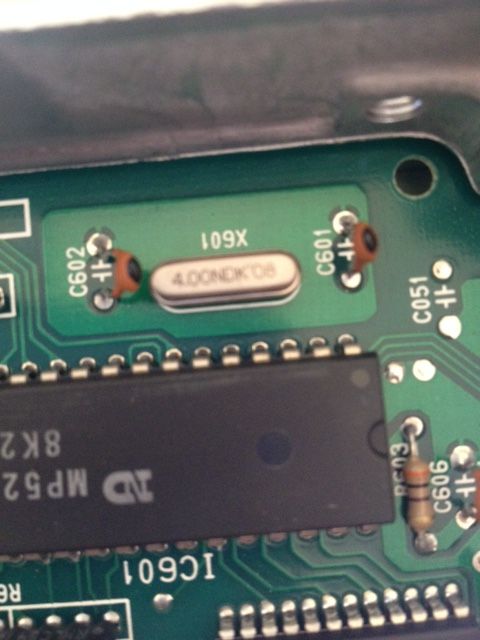Only concession I’d make to your comment is that the sensitivity of the clock speed would be SLIGHTLY improved - it’s detecting changes in input SLIGHTLY quicker than the normal crystal. The scan time is decreased, so input changes are slightly faster detected. However, that doesn’t alter the basic fact that the program is fixed, so other than tiny adjustments (which cannot be perceived) are possible.
I’ve had three dyno checks on my car, one at one source, and two at another, when none of the readings were exactly the same. No changes at all to the car on any test. The latter (Nobles at Chesterfield) was in fact disputed by most of the owners there, we had the feeling generally they didn’t know what adjustments to make to obtain what should have been better readings for most cars.I was invited to Nobles so my car could be rated as ‘Stock’ against the rest, which were turbo and S/Cd. This was a ‘Top Dog’ contest and should have proved who had the best set up - it didn’t conclusively.
So - Dyno checks aren’t necessarily conclusive, it depends on the equipment, the operator, the weather and various factors which might seem unrelated but are.
I don’t know Skuzzle, so I cannot make any comment on the reliability of his claim, but you should ask him
when, where and how his dyno checks were done - I.E. The same place? with and without the upgrade crystal at the same time? What was the ambient temperature? Was it hot, cold, inbetween, raining or sunny? All are relevant factors.And was it the same operator (in the car and on the dyno?) Was the engine and drive train moderately warm or hot - for both crystals? Oh - and the same fuel in the tank?
Most of all - was the operator honest? You can alter settings on a dyno to suit the occasion - if a less than honest operator wanted to convince someone (who already appears convinced) that he has a better set up, then you can make it happen - the owner goes away happy, and the operator pockets the cash.
I’ll throw in a personal observation - Roll bars. Mine is a Hard Dog, one of the best, built like a Sherman tank. Owners who had fitted a roll bar before me all claimed they stiffened up the rear of the car, I convinced myself the same after I fitted mine. To be brutally honest - the only way you can check this is with strain gauges, with which I’m not familiar nor would I know how to apply them or use them, though I have a friend back in Canada who used to stick strain gauges on 727 wings which were made at the former AVRO plant in Canada. - They were thoroughly tested against strict specs from Boeing before delivery to the States. You believe what you want to believe, so placebo effect - definitely. However, main reason I fitted the bar was for safety, and after what I’ve seen, read and heard after thirteen years in this Club then I’m happy I did - better than stiffening it’s a reassurance that if anything happens I’m safe (it says here - - -!)
The ball is in Skuzzles court, prove it. Redline is as is, fueling ditto. Power increase, without engine mods - not possible. All tests must be equal, same time, same place,same weather etc etc.
How much is “marginal”?



